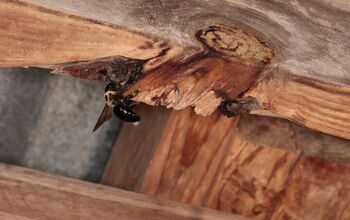Eight Stress-Relieving Plants To Grow At Home

Dealing with stress is sadly a part of life, but that doesn’t mean you should let it rule your life. Today, finding natural stress and anxiety remedies is easier than ever. That’s why we put together a list of the 8 best stress-relieving plants to grow at home.
Stress-relieving plants like chamomile, lavender, and lemon balm are easy to grow at home. You can also grow passionflower, ashwagandha, and valerian at home indoors and outdoors. Rosemary and kava are popular at-home stress remedies as well, both in tea and as supplements. Each of these plants is easy to harvest and has several health benefits.
Many people find natural remedies to be more effective and healthier than some pharmaceuticals. Follow along as we highlight 8 stress-relieving plants to grow at home.
What Plants Can You Grow To Help With Anxiety?
1. Lemon Balm
You may be familiar with lemon balm if you know much about adaptogens. Adaptogens naturally trigger the stress response system to relieve anxiety. It’s a beautiful, tasty herb that provides a natural, healthy way to cope with stress and anxiety.
Easy to grow, the average person can grow lemon balm without much effort. Lemon balm is also a perennial, so you can look forward to it coming back year after year. Plant your lemon balm in well-drained soil in a spot that gets up to 6 hours of full sunlight.
However, lemon balm can thrive in partial shade if that’s your only option. It looks great in gardens because of its bushy nature, but many people grow lemon balm indoors. Cut and dry the leaves, brew them in tea, and drink it warm to relieve your anxiety.
2. Chamomile
Many people find that chamomile is equally beneficial to their mental health as it is to their gastrointestinal health. That’s because it can help curb nausea, acid reflux, and anxiety, which makes it a well-rounded herb. It’s easy to grow in your garden or your home as a houseplant with a simple light setup.
You can even forego lights and put the plant close enough to a window that it gets 8 hours of full sunlight per day. Most people use chamomile to brew tea and drink it before bed to get a good night's sleep. However, you can drink it throughout the day to help relieve your anxiety.
You can also make a chamomile extract using glycerin or alcohol and use it as a tincture. Chamomile pairs well with lavender, lemon balm, ginger, honey, and green tea.
3. Lavender
Lavender is a stress-relieving herb that people use to curb anxiety every day. You can easily grow lavender indoors with little effort and harvest it to brew tea. Put it in a pot with well-draining, sandy soil to encourage healthy growth.
At first, you must water lavender every 2 days, then switch to watering it every 10 days after that. However, you must be careful and avoid using heavy soil and overwatering it, as that makes root rot more likely. Lavender is a great at-home anxiety treatment, as you can easily harvest it and use it for tea.
Simply dry the leaves, put them in a bag, and steep them in hot water. Some people even mix lavender with lemon balm to get the best anti-anxiety effects.
4. Ashwagandha
You may have heard of ashwagandha if you’ve ever researched nootropics. Often sold as a supplement, ashwagandha is a unique shrub that people use as an adaptogen. It can help relieve anxiety, which is why it’s so popular among people looking to curb stress without pharmaceuticals.
Luckily, you can grow ashwagandha at home both indoors and in your garden. The key to growing ashwagandha is that you must provide at least 6 hours of sunlight. You must use sandy soil that drains well, and provide just under a cup of water every 9 days.
Ashwagandha is different than other stress-relieving plants in that you must let the soil dry before watering again. Other plants need a damp top layer of soil most of the time, but not ashwagandha. Harvest and dry the roots after 6 months and either grind them into a powder them or make a root extract for anxiety.
5. Passionflower
Passionflower is one of the most unique and visually appealing stress-relieving herbs to grow at home. Not only is it beautiful, but it can help with everything from anxiety and insomnia to inflammation. Rich in antioxidants, it’s worth introducing passionflower to your daily routine.
Passionflower thrives in pots full of rich soil with drainage holes. It needs up to 1 ½ inches of water per week, but you may need to give more based on how hot it is. Ideally, you should ensure passionflower gets at least 6 hours of full sunlight per day.
Some people create passionflower extract or use it as a tincture. However, it’s much easier to dry the flowers and brew some delicious tea.
6. Valerian
Have you heard of valerian root capsules? They are popular anti-anxiety supplements that many people buy to use daily. However, you can save a small fortune if you grow valerian at home and harvest it, and make supplements yourself.
Some people dry the roots, grind them, and put the powder in capsules to take at night. Others simply pour hot water over the crushed leaves, strain the water, and drink the tea. Valerian is a unique, beautiful plant that thrives in full sunlight outdoors during the spring.
Otherwise, you can grow valerian year-round if you grow it indoors with lights. Make sure the top layer of soil never dries out, or else the valerian won’t thrive. Loam soil is the best option for valerian.
7. Kava
Kava has become increasingly popular among people looking to treat anxiety without medication. The easiest way to grow kava is to get a cutting from someone. You can sometimes find cheap kava cuttings online, which is easier than growing kava from seeds.
People specifically use the roots of kava to create extract, supplements, and tea. Kava does best in humid, warm areas with partial shade. However, you must keep in mind that growing kava is quite difficult, and it takes a lot of patience.
That’s why it’s worth buying a few cuttings from mature plants to ensure you can try a few times. Otherwise, your hard work may go to waste. Once mature, take a cutting to grow it again, and harvest the roots from the original plant. Dry and grind the roots into a powder to brew tea or make supplements.
8. Rosemary
Rosemary is equally beautiful, unique, and easy to grow in warm climates. Growing rosemary from seeds can be difficult, but you can find rosemary plants at many garden centers. Pick a spot in your garden that gets at least 6 hours of sunlight per day.
You can grow rosemary indoors, but only if you have a great light setup. Rosemary thrives in damp soil, but overwatering can quickly ruin the plant. Never soak rosemary to the point where the roots get wet, as this can lead to rot.
You can easily cook with rosemary, brew it as tea, or turn it into an extract. Some people even fill capsules with rosemary extract.
Summing It Up
Lemon balm and chamomile are among the best stress-relieving plants to grow at home. Lavender and ashwagandha are also easy to grow, and you can use them as supplements or tea. Otherwise, you can grow rosemary, kava, valerian, or passionflower to help fight stress at home.
Related Guides:

Nick Durante is a professional writer with a primary focus on home improvement. When he is not writing about home improvement or taking on projects around the house, he likes to read and create art. He is always looking towards the newest trends in home improvement.
More by Nick Durante










![10 Best Electric Pressure Washers – [2022 Reviews & Guide]](https://cdn-fastly.upgradedhome.com/media/2023/07/31/9070600/10-best-electric-pressure-washers-2022-reviews-guide.jpg?size=350x220)
















